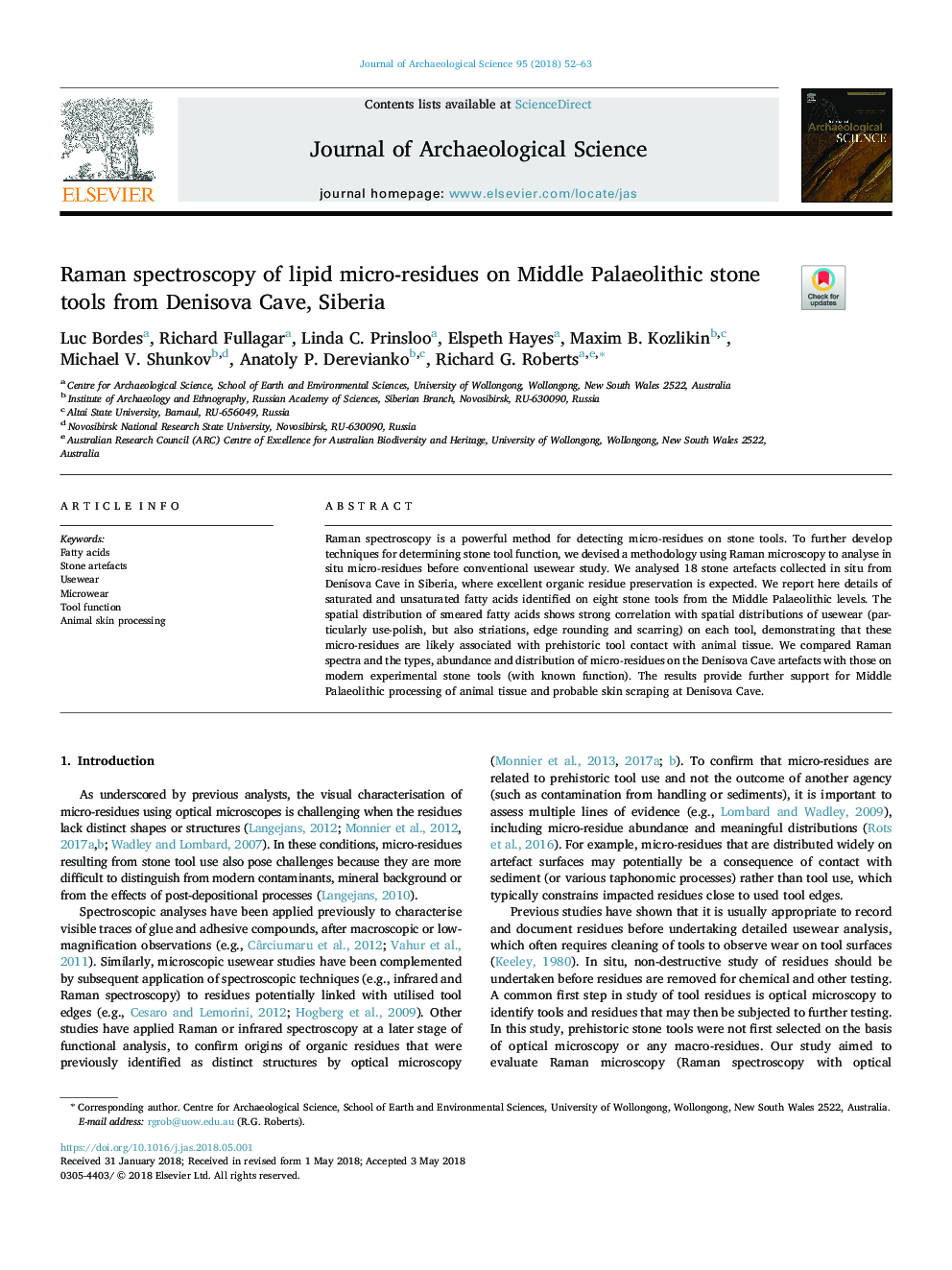| Article ID | Journal | Published Year | Pages | File Type |
|---|---|---|---|---|
| 7440834 | Journal of Archaeological Science | 2018 | 12 Pages |
Abstract
Raman spectroscopy is a powerful method for detecting micro-residues on stone tools. To further develop techniques for determining stone tool function, we devised a methodology using Raman microscopy to analyse in situ micro-residues before conventional usewear study. We analysed 18 stone artefacts collected in situ from Denisova Cave in Siberia, where excellent organic residue preservation is expected. We report here details of saturated and unsaturated fatty acids identified on eight stone tools from the Middle Palaeolithic levels. The spatial distribution of smeared fatty acids shows strong correlation with spatial distributions of usewear (particularly use-polish, but also striations, edge rounding and scarring) on each tool, demonstrating that these micro-residues are likely associated with prehistoric tool contact with animal tissue. We compared Raman spectra and the types, abundance and distribution of micro-residues on the Denisova Cave artefacts with those on modern experimental stone tools (with known function). The results provide further support for Middle Palaeolithic processing of animal tissue and probable skin scraping at Denisova Cave.
Related Topics
Physical Sciences and Engineering
Materials Science
Materials Science (General)
Authors
Luc Bordes, Richard Fullagar, Linda C. Prinsloo, Elspeth Hayes, Maxim B. Kozlikin, Michael V. Shunkov, Anatoly P. Derevianko, Richard G. Roberts,
